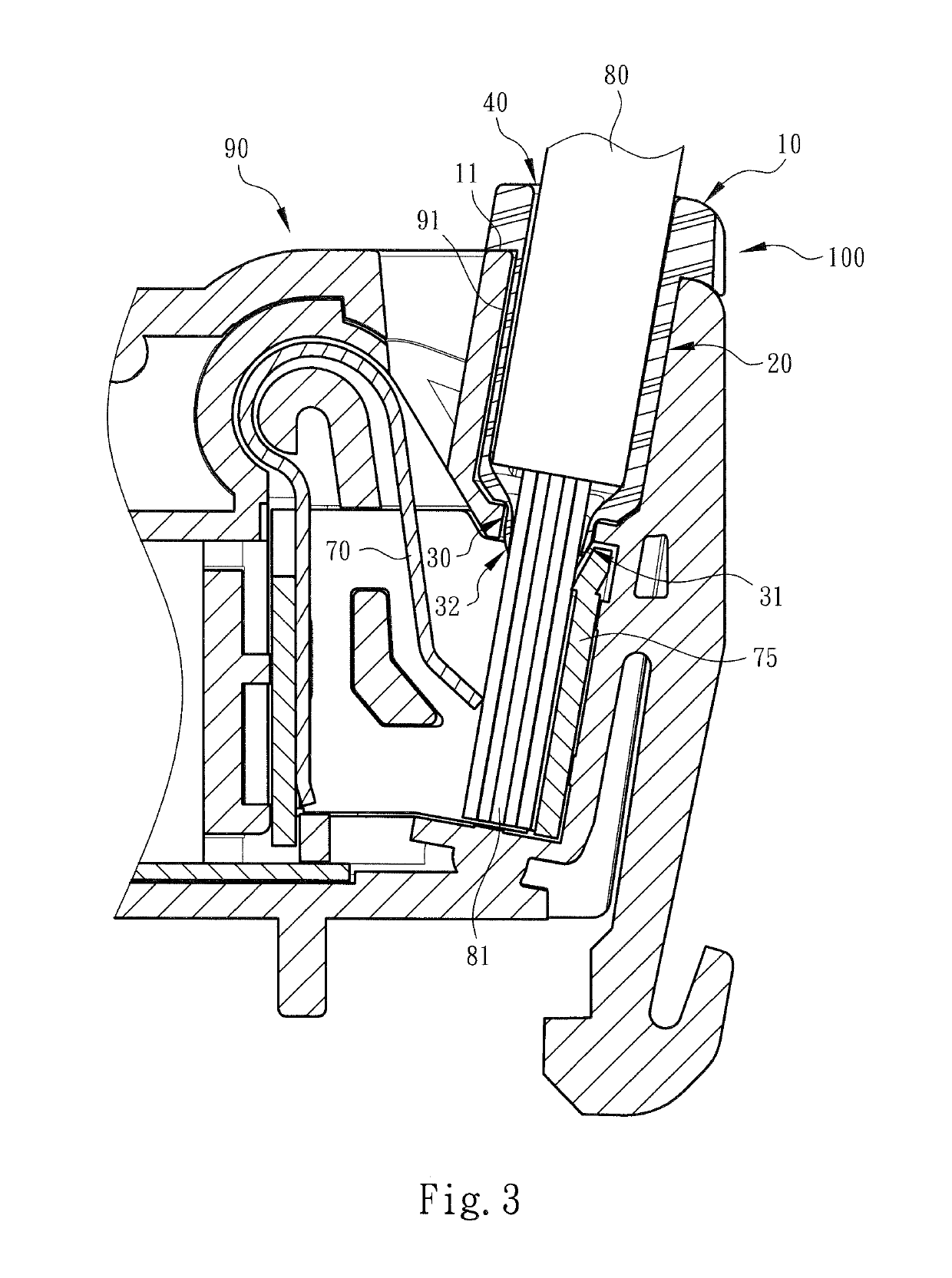Wire plug-in aid sleeve structure for wire connection terminal
a wire connection and plug-in technology, applied in the direction of relieving strain on wire connection, two-part coupling device, coupling device connection, etc., can solve the problems of poor contact, insecurity, conductive wire is apt to deflect or swing, etc., to improve the security of the conductive wire assembled, the effect of improving the shortcomings
- Summary
- Abstract
- Description
- Claims
- Application Information
AI Technical Summary
Benefits of technology
Problems solved by technology
Method used
Image
Examples
Embodiment Construction
[0025]Please refer to FIGS. 1, 2 and 3. The wire plug-in aid sleeve structure for wire connection terminal of the present invention includes an aid sleeve 100 made of rubber, plastic or the like material. The aid sleeve 100 is mounted in the wire plug-in hole 91 of the terminal 90 for guiding the conductive wire 80 into the terminal 90.
[0026]As shown in the drawings, the aid sleeve 100 includes at least one head section 10, a belly section 20 connected with the head section 10 and a tail section 30 connected with the belly section 20. In this embodiment, the head section 10 of the aid sleeve 100 is connected with two cylindrical belly sections 20 and two tail sections 30 corresponding to the structural form of the terminal 90 that has two wire plug-in holes 91 on each side.
[0027]As shown in FIGS. 1, 2 and 3, the head section 10 has the form of a plate body having an area larger than the (cross-sectional) area of the belly sections 20. Accordingly, a shoulder section 11 is formed bet...
PUM
 Login to View More
Login to View More Abstract
Description
Claims
Application Information
 Login to View More
Login to View More - R&D
- Intellectual Property
- Life Sciences
- Materials
- Tech Scout
- Unparalleled Data Quality
- Higher Quality Content
- 60% Fewer Hallucinations
Browse by: Latest US Patents, China's latest patents, Technical Efficacy Thesaurus, Application Domain, Technology Topic, Popular Technical Reports.
© 2025 PatSnap. All rights reserved.Legal|Privacy policy|Modern Slavery Act Transparency Statement|Sitemap|About US| Contact US: help@patsnap.com



